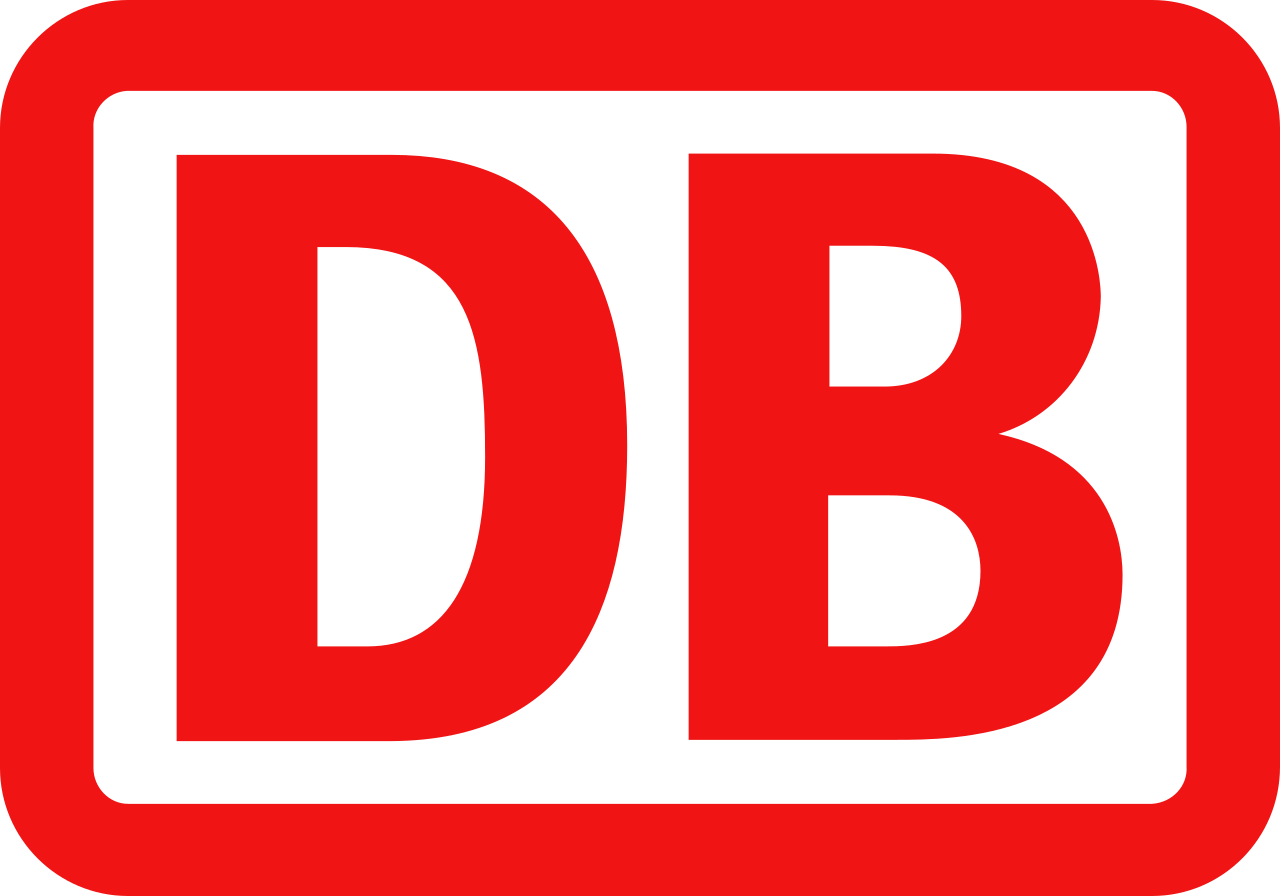
You can buy train tickets directly from the operator or through a reseller. The reseller is typically slightly more expensive (3-5%) but can provide an easier booking experience, especially if you travel with more than one operator.


These operators provide a complete journey either as a direct connection or through their partners. Even if a change of trains is involved, it’s all part of a single itinerary managed by the same train company or its partners, offering a smoother and more coordinated travel experience.

Some operators don’t run direct trains the whole way, but they serve either the departure or arrival station. In many cases, you can combine two of these operators to complete your journey by changing trains along the way. This is often a flexible and budget-friendly way to travel — especially if you’re comfortable piecing together your own itinerary.
Just keep in mind that these are separate journeys, which means a delay on the first leg could cause you to miss the second without automatic compensation or rebooking. It’s a great option for confident travelers who don’t mind a bit of extra planning.




It seems there might be some confusion, as FlixBus is actually a long-distance bus service, not a rail operator. Therefore, it does not operate trains from Copenhagen to Vienna. However, for train travel between Copenhagen and Vienna, travelers often rely on services provided by operators such as Deutsche Bahn (DB) and Austrian Federal Railways (ÖBB).
Deutsche Bahn is Germany’s national railway company and offers a variety of train types including the Intercity-Express (ICE), which is known for its speed and comfort. ICE trains typically have modern amenities such as Wi-Fi, dining cars or bistro services, power outlets at seats, and a selection of classes ranging from second class to first class which offers more spacious seating. Customer support is efficient, with multilingual assistance available at major train stations and through their website or mobile app.
Austrian Federal Railways, or ÖBB, is the national railway of Austria. ÖBB operates Railjet trains, known for their high-speed connections and comfortable travel experience. Railjet trains offer three classes of service: Economy, First, and Business Class, each providing varying levels of comfort and services. Amenities on these trains include on-board dining options, free Wi-Fi, family-friendly compartments, and power outlets. ÖBB’s customer support services are accessible, offering assistance both online and at stations, along with dedicated staff to help with travel inquiries.
Both Deutsche Bahn and ÖBB collaborate on routes across Europe, including those connecting Copenhagen and Vienna, often requiring at least one connection in a city like Hamburg. First-time travelers should check schedules and ticket options in advance, as booking early often provides significant savings. Additionally, it’s beneficial to familiarize oneself with the route specifics, such as transfer requirements and station layouts, to ensure a smooth journey.
When traveling by train from Copenhagen to Vienna, the Interrail Global Pass is valid for travelers who are residents of a European country other than Denmark or Austria, as it allows unlimited travel across multiple European countries. The Interrail One Country Pass is not applicable for this journey because it covers only specific countries and this route crosses multiple country borders. For non-European residents, the Eurail Global Pass is valid for this journey, as it also provides unlimited train travel across multiple countries in Europe.
Upon arriving in Vienna by train, you’ll find a well-connected network of public transportation options to explore the city. The Vienna U-Bahn (metro) system is fast and efficient, with five lines: U1, U2, U3, U4, and U6, each color-coded for easy navigation. Metros run frequently from around 5 AM to midnight, and 24 hours on weekends. Trams are another convenient way to get around, especially within central districts, and they provide a scenic view of the city streets. Buses complement the tram and metro services, reaching areas not covered by rail. All three — metro, trams, and buses — operate under Wiener Linien, and a single ticket is valid for any mode of transport within the city zone.
Taxis are available and can be hailed on the street, at designated stands, ordered by phone, or via apps like Taxi 31300. They’re metered and generally reliable. Ridesharing services like Uber also operate in Vienna, providing a cashless and often more affordable alternative to traditional taxis. Vienna’s public transportation is generally safe and punctual, and purchasing a day or week pass can offer savings if you plan on extensive travel around the city.
Vienna is a central hub for rail travel, providing excellent connections both domestically and internationally. Domestically, the ÖBB (Austrian Federal Railways) operates frequent services to major cities such as Salzburg, Graz, and Innsbruck. The Railjet express service connects Vienna to Salzburg in approximately 2.5 hours, offering both comfort and efficiency. For trips to Graz, the train journey takes around 2.5 hours, while traveling to Innsbruck typically takes about 4.5 hours.
Internationally, Vienna is well connected to several European capitals and major cities. The Railjet service offers a convenient route to Munich, Germany, with the journey taking about 4 hours. The EuroCity trains to Prague, Czech Republic, provide a scenic 4-hour trip. Direct trains to Budapest, Hungary, through the Railjet service or EuroCity, take approximately 2.5 hours. The Nightjet trains offer overnight options to cities like Zurich, Switzerland, and Venice, Italy, providing both sleeper and seating accommodations. Vienna is also a stop on the high-speed Railjet route to Zurich, which takes around 8 hours. These connections make Vienna an ideal starting point for exploring Central Europe by train.
The best months to visit Vienna are generally during the shoulder seasons of spring (April to June) and autumn (September to October). During these periods, the weather is mild and pleasant, with blooming flowers in spring and vibrant fall foliage making the city particularly beautiful. These months also tend to see fewer tourists compared to the busy summer months, leading to lower prices for accommodations and shorter queues at major attractions.
Springtime in Vienna offers the added charm of outdoor events, such as the Vienna City Marathon and the vibrant Easter markets. In autumn, apart from the comfortable weather, you can enjoy the Vienna Wine Hiking Day, which celebrates the local vineyards.
Arriving by train during these periods is both convenient and picturesque, as the surrounding landscapes showcase their seasonal best. Additionally, if you’re interested in classical music, Vienna is teeming with concerts and cultural events year-round, though summer features the Film Festival at the Rathausplatz, adding a unique outdoor cinema experience.
While summer offers a lively atmosphere with numerous festivals like the Donauinselfest, prices are generally higher and the city is more crowded. Winter, particularly December, transforms Vienna into a winter wonderland with its famous Christmas markets, offering a magical experience, although it can be cold and grey. Overall, traveling in spring or autumn balances good weather, lower prices, and delightful cultural experiences.
When traveling by train from Copenhagen to Vienna, it is essential to pack the following items: a valid passport or national ID card for travel within the Schengen Area, train tickets (printed or digital), a European Health Insurance Card (EHIC) or proof of travel insurance, comfortable clothing for the journey, a neck pillow and eye mask for better rest, snacks and a water bottle, basic toiletries and hand sanitizer, entertainment such as books, magazines, or electronic devices, headphones, a portable charger with its cable, a power adapter (both countries use Type C and F plugs, so you won’t need an adapter if you’re traveling from one to the other), a map or guidebook of Vienna, appropriate clothing for Vienna’s weather, a reusable shopping bag for any purchases, and any necessary medication with prescriptions.